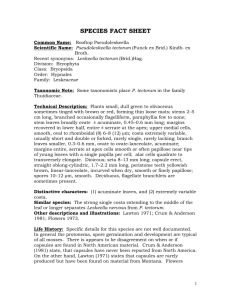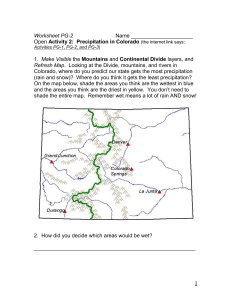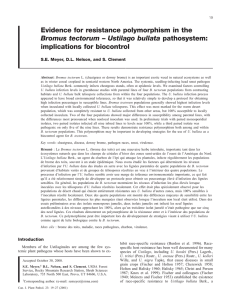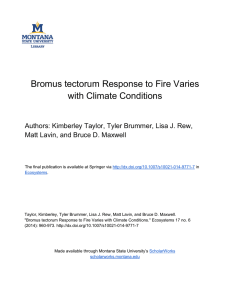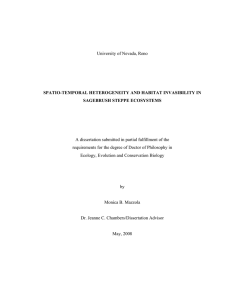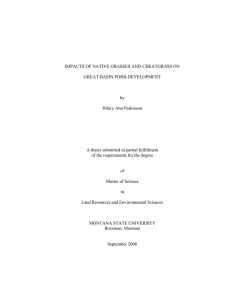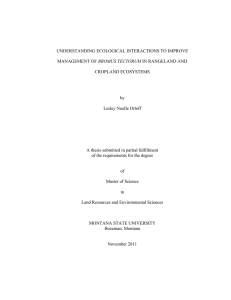Effects of precipitation change on population dynamics of Bromus tectorum Introduction Population dynamics
advertisement
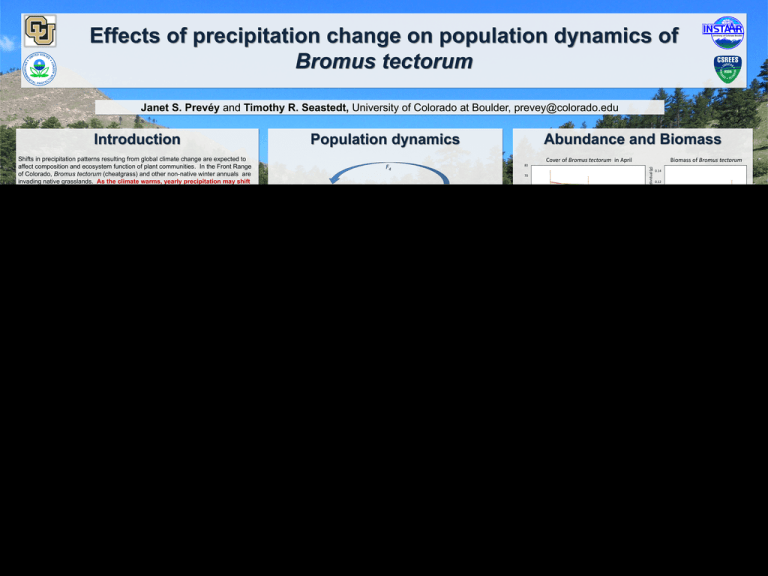
Effects of precipitation change on population dynamics of Bromus tectorum Janet S. Prevéy and Timothy R. Seastedt, University of Colorado at Boulder, prevey@colorado.edu Introduction Population dynamics Abundance and Biomass Shifts in precipitation patterns resulting from global climate change are expected to affect composition and ecosystem function of plant communities. In the Front Range of Colorado, Bromus tectorum (cheatgrass) and other non-native winter annuals are invading native grasslands. As the climate warms, yearly precipitation may shift to a more winter-wet pattern and benefit early-growing winter annuals, such as cheatgrass, to the detriment of native species. Wet May Dry May Figs 4 and 5. In early spring, B. tectorum was more abundant in winter wet treatments, and least abundant in the winter-dry treatment. Ambient precipitation and biomass differed greatly between 2011 and 2012. In 2012, biomass was greatest in winter wet treatments. Research Question: How will cheatgrass populations respond to precipitation change? Fig 1. Life-cycle diagram for B. tectorum. Probabilities of surviving from one life stage to another were used o calculate the rate of population growth of cheatgrass in the different treatments. a Experimental Design ab b Treatment Winter precipitation (Oct – March) Summer precipitation (April – September) control ambient ambient winter wet 50% increase ambient ↑ B. tectorum winter wet / summer wet 50% increase 50% increase ↑ B. tectorum winter wet / summer dry 50% increase 50% decrease winter dry / summer wet (historical) 50% decrease 50% increase ab ab Hypotheses ↑ ↓ 6/23/2011 B. tectorum B. tectorum Four precipitation manipulations were established in summer 2010, and population dynamics of B. tectorum were measured for the following two years. Fig 2. In 2012, population growth rates were highest for B. tectorum growing in the winter-wet treatment, and negative (indicating population decline) in the winter-dry / summer wet treatment. Fig 3. Bromus tectorum was very sensitive to changes in precipitation timing. Cheatgrass flowered and senesced earlier in the winter wet treatment (a), and later in the control (b) and winter dry treatments. Winter wet / summer dry Increased winter precipitation caused earlier green-up and senescence of B. tectorum. Reduced summer precipitation suppressed abundance and production of later-growing native species. Conclusions • Wetter winters increase population growth and abundance of B. tectorum. (a) Winter wet / summer dry • Population growth of B. tectorum declined in the winter dry / summer wet treatment that simulated historical conditions, suggesting that changing precipitation patterns may already be assisting the expansion of winter annuals in Front Range ecosystems. • Increased winter precipitation and reduced summer precipitation caused earlier green-up and senescence of B. tectorum. This shift in phenology could result in earlier brown-down of grasslands, and less primary production in the summer. The field site is located in a grassland in the foothills near Boulder, CO. Manipulations were created with rainout-shelters and water additions. (b) Control Photos taken on 6/22/2011 • Cheatgrass may become more invasive in grasslands along the Front Range as the climate changes.



